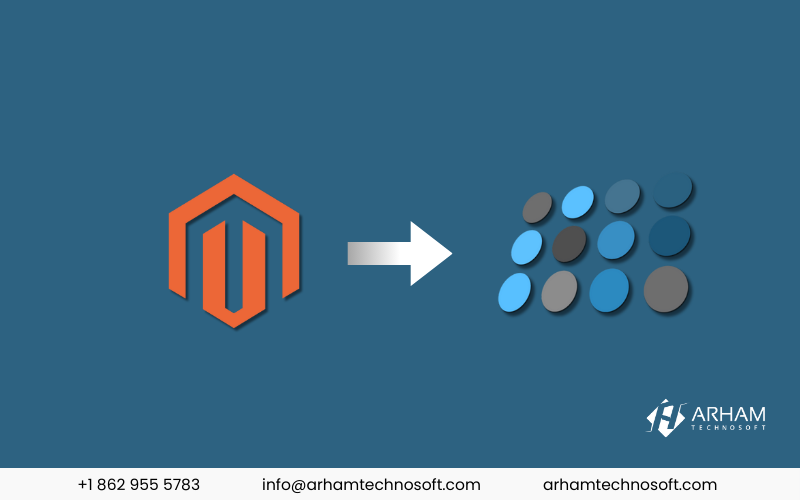Online stores often find the need to switch their platforms to keep up with evolving technologies, customer demands, and competitive pressures. One such migration that many businesses contemplate is moving from Magento to nopCommerce. Both platforms offer robust features and customization options, but migrating between them requires careful planning and execution to ensure a smooth transition without disrupting business operations.
In this comprehensive guide, we’ll provide a detailed checklist for migrating from Magento to nopCommerce. Whether you’re a small startup or a large enterprise, this checklist will help you navigate the migration process effectively, minimizing risks and maximizing the benefits of your new e-commerce platform.
1. Understanding the Need for Migration:
- Magento’s Pain Points: Delve into the specific pain points of Magento, such as its resource-intensive nature, complex customization, and licensing costs, which may prompt merchants to seek an alternative solution.
- NopCommerce Advantages: Highlight the compelling advantages of NopCommerce, including its lightweight architecture, robust feature set, and cost-effectiveness, making it an appealing choice for businesses seeking scalability and flexibility.
- Strategic Planning: Stress the importance of strategic planning in determining whether migration aligns with the long-term goals and requirements of your e-commerce business, emphasizing the need for thorough analysis and stakeholder involvement.
2. Preparing for Migration:
- Holistic Store Assessment: Conduct a comprehensive assessment of your Magento store, examining various aspects such as data structure, extensions, customizations, and performance metrics.
- Data Inventory and Cleanup: Undertake a meticulous inventory of your data assets, identifying redundant, obsolete, or inaccurate data that needs to be cleaned up before migration to ensure data integrity and streamline the transition process.
- Migration Roadmap: Develop a detailed migration roadmap encompassing key milestones, timelines, resource allocation, and risk mitigation strategies, ensuring a structured and well-executed migration process.
3. Data Migration Strategies:
- Migration Approaches: Explore different data migration approaches, including manual migration, CSV import/export, API-based migration, and specialized migration tools, weighing the pros and cons of each approach based on your specific requirements and constraints.
- Data Mapping and Transformation: Dive into the intricacies of data mapping and transformation, ensuring seamless migration of critical data entities such as products, categories, customers, orders, and inventory levels while maintaining data integrity and relational consistency.
- Delta Migration and Validation: Discuss the importance of delta migration techniques for handling incremental data updates during the migration process, coupled with robust validation mechanisms to identify and rectify any data discrepancies or anomalies.
4. Design and Customization Transition:
- Design Paradigm Shift: Explore the fundamental differences in design paradigms between Magento and NopCommerce, ranging from theme architecture and layout customization to frontend development workflows and responsive design principles.
- Theme Migration and Adaptation: Provide insights into migrating and adapting your existing Magento theme to the NopCommerce platform, covering aspects such as HTML/CSS restructuring, template customization, and integration with NopCommerce’s theme engine.
- Customization Strategies: Delve into advanced customization strategies in NopCommerce, including plugin development, widget integration, and custom module implementation, empowering merchants to tailor their store to their unique business requirements while adhering to best practices and extensibility principles.
5. SEO and Marketing Transition:
- SEO Impact Assessment: Conduct a comprehensive SEO impact assessment to identify potential risks and opportunities associated with the migration, encompassing factors such as URL structure changes, content optimization, metadata preservation, and canonicalization strategies.
- 301 Redirect Mapping: Develop a meticulous 301 redirect mapping plan to ensure seamless redirection of incoming traffic and preservation of SEO equity, mitigating the risk of broken links, crawl errors, and loss of search engine visibility.
- Marketing Integration: Explore the integration capabilities of NopCommerce with popular marketing platforms and tools, such as Google Analytics, Facebook Pixel, email marketing services, and CRM systems, enabling merchants to maintain continuity in their marketing campaigns and customer engagement strategies post-migration.
6. Testing and Quality Assurance:
- Comprehensive Testing Plan: Develop a comprehensive testing plan encompassing functional testing, regression testing, performance testing, security testing, and cross-browser compatibility testing, leveraging both automated testing frameworks and manual testing protocols.
- User Acceptance Testing (UAT): Engage stakeholders and end-users in the UAT process to validate the migrated store’s functionality, usability, and performance against predefined acceptance criteria, ensuring alignment with business expectations and user experience standards.
- Load Testing and Scalability Assessment: Conduct rigorous load testing and scalability assessment to evaluate the migrated store’s capacity to handle concurrent user traffic, transaction volumes, and peak load scenarios, identifying and addressing performance bottlenecks proactively.
7. Go-Live and Post-Migration Optimization:
- Go-Live Checklist: Prepare a comprehensive go-live checklist covering essential tasks such as DNS propagation, SSL certificate installation, payment gateway configuration, order fulfillment setup, and storefront monitoring, ensuring a smooth transition from Magento to NopCommerce.
- Performance Monitoring and Optimization: Implement robust performance monitoring tools and analytics dashboards to track key performance indicators (KPIs) such as page load times, conversion rates, bounce rates, and server response times, facilitating continuous optimization and refinement of the migrated store’s performance.
- User Feedback and Iterative Improvement: Solicit user feedback through surveys, feedback forms, and usability testing sessions to gather insights into user satisfaction, pain points, and feature requests, driving iterative improvements and enhancements to the NopCommerce store’s user experience and functionality over time.
Conclusion:
Migrating from Magento to NopCommerce is a multifaceted endeavor that demands meticulous planning, execution, and ongoing optimization. By immersing yourself in the intricacies of the migration process and leveraging the insights and strategies outlined in this comprehensive guide, you can navigate the transition with confidence and unlock new opportunities for growth and innovation in your e-commerce journey.


